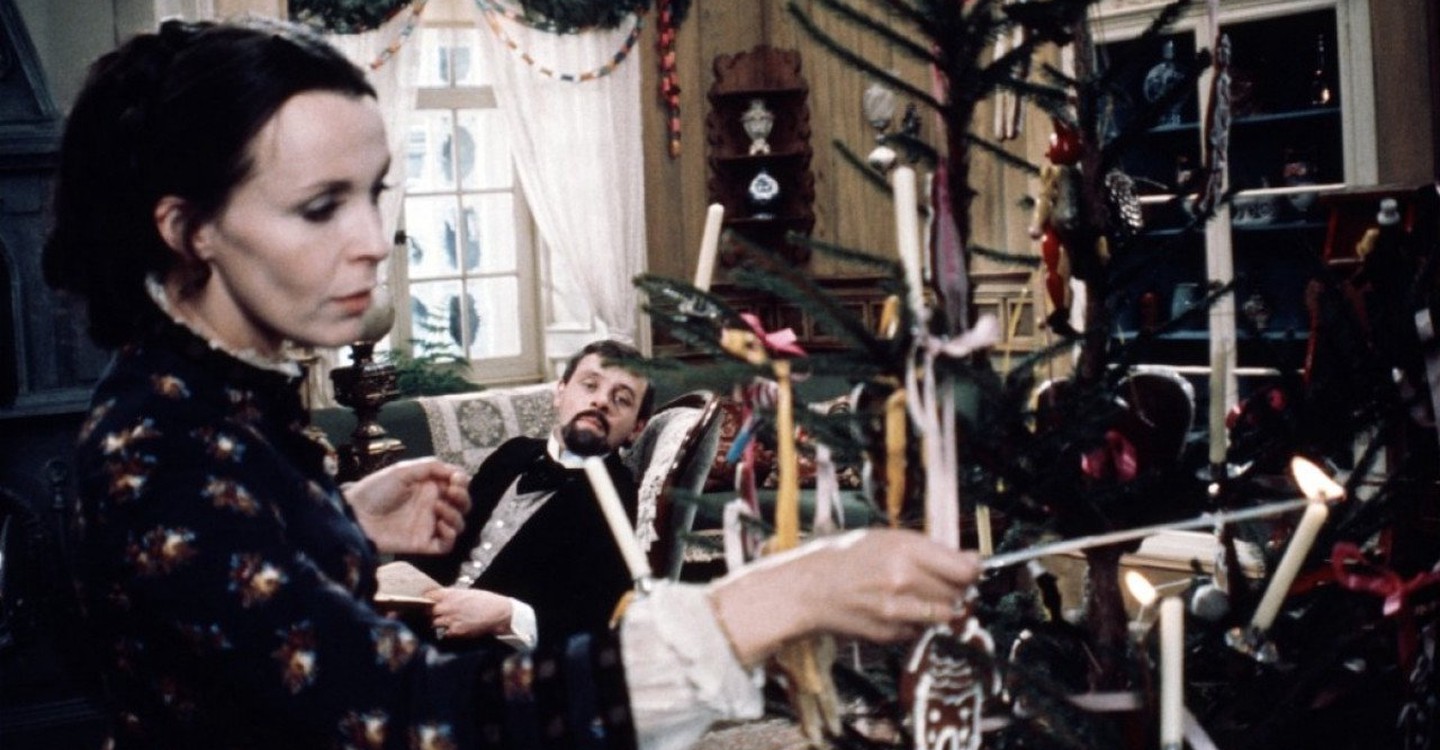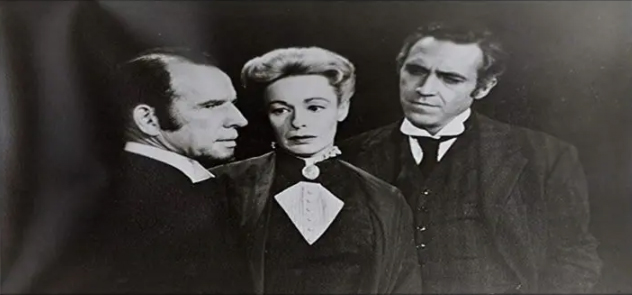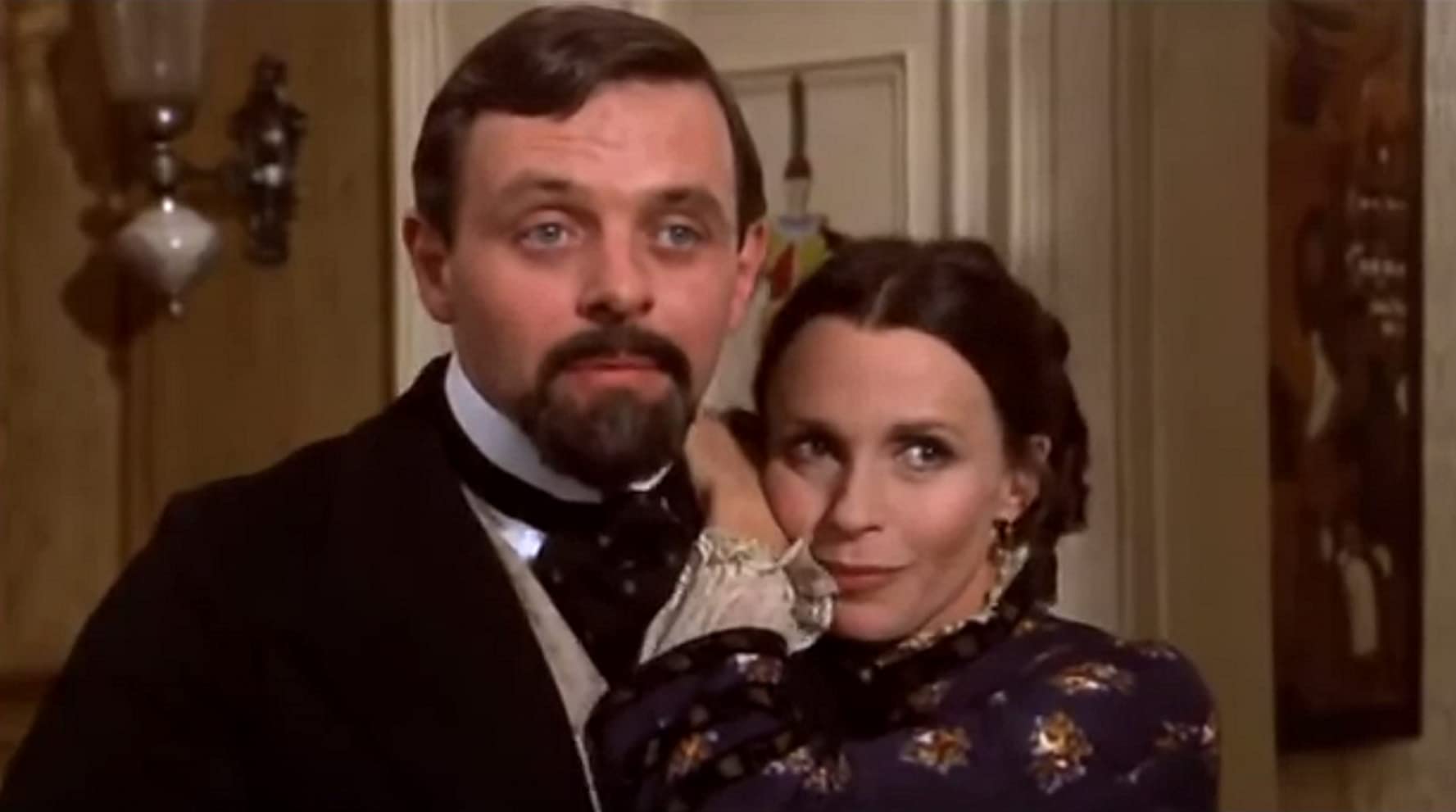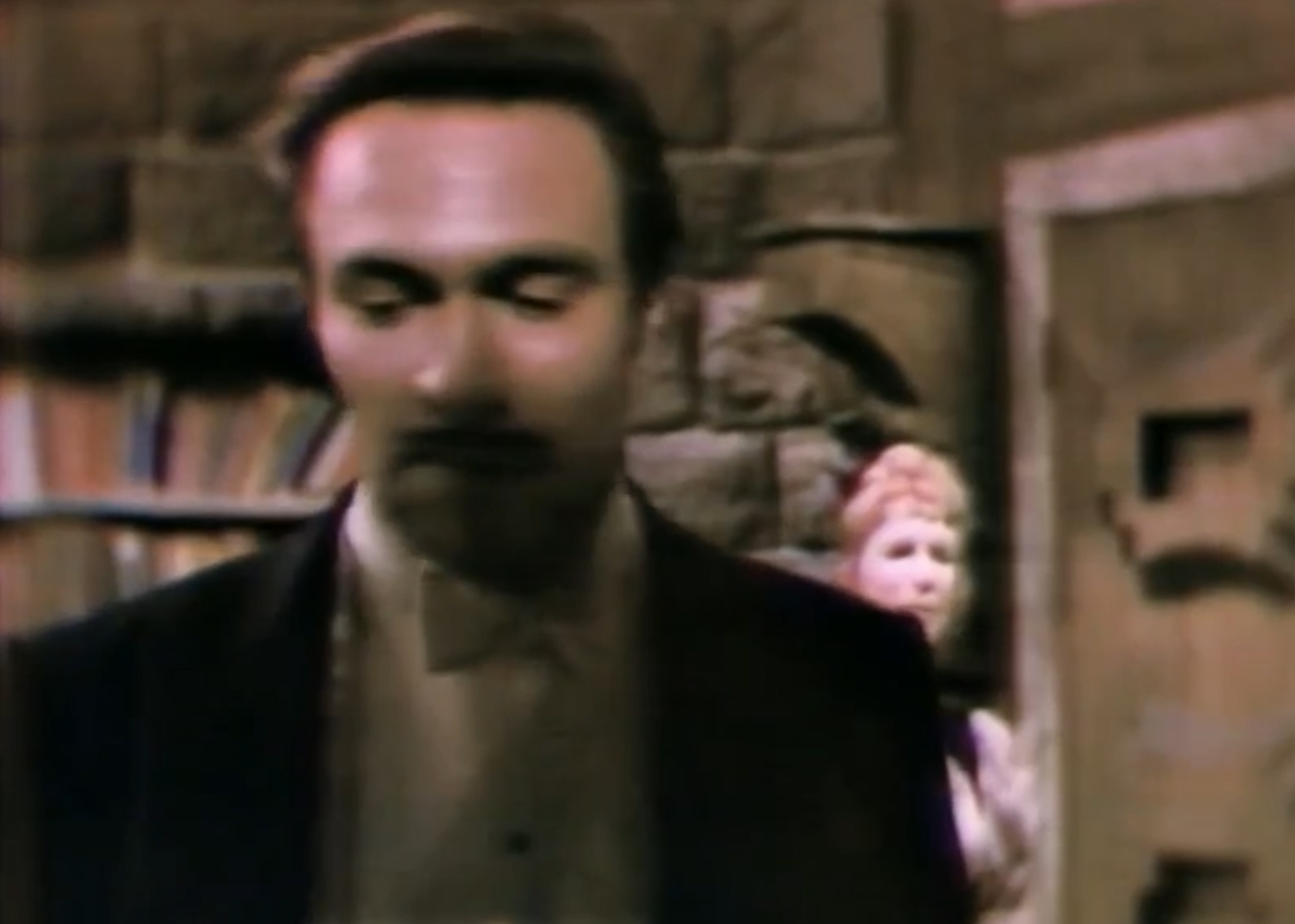Different stages of “The doll’s house” use their production values to stress Ibsen’s objectives for the play. It refers to both 1959 TV adaptation and 1973-film adaptation. They use set, costumes, and lighting to stress Ibsen’s skepticism about the late 19th century family.
Set: 1973 Film Adaptation

This frame is from the movie adaptation directed by Patrick Garland (1973). The set depicts a neat and exemplary Scandinavian household. By doing so, it creates a contrast between the orderly appearances and dysfunctional background of Nora and Torvald’s marriage. Thus, the set helps understanding Ibsen’s critical attitude to the family of the late 19th century.
Costumes: 1959 TV Adaptation

Costumes are essential to set the action in a specific historical period. This frame from the TV adaptation directed by George Schaefer (1959) depicts the main characters in their garbs. Strict suits with napkins for men and the neck-high dress with a corset for Nora signify the Victorian era. It serves Ibsen’s objective by causing immediate association with rigid family structures of the period.
Costumes: 1973 Film Adaptation

This frame shows the main characters as they appear in the previously discussed film adaptation (Garland, 1973). As in the 1959 TV adaptation, Torvald fears a formal attire and Nora – a neck-high dress with a corset. Similar to the previous example, these costumes provoke the association with the late 19th century and, consequently, the rigid social structure of the families of that time.
Lighting: 1973 Film Adaptation
Lighting may also be a way to emphasize the authorial intent. This frame from the film adaptation depicts Nora playing with her children early in the plot (Garland, 1973). Light falls on Nora’s face, illuminating and highlighting her. It stresses that Nora is fair, bright, and nor corrupted, as Torvald would later suggest, thus emphasizing Ibsen’s message on the hypocrisy of Victorian morality.
Lighting: 1959 TV Adaptation

This frame from the TV adaption so uses lighting to deliver the authorial intent (Schaefer, 1959). It is the play’s culmination when Torvald accuses Nora of being corrupted and wicked. However, Nora’s face bathes in light, while Torvald’s is in the dark. This contrast emphasizes Ibsen’s point that Torvald’s arrogant self-righteousness rather than Nora’s earnest although misguided desire to help is the real vice in the play.
References
Garland, P. (1973). A doll’s house [Film]. Paramount Pictures.
Shaefer, G. (Director). A doll’s house [Film]. National Broadcasting Company.